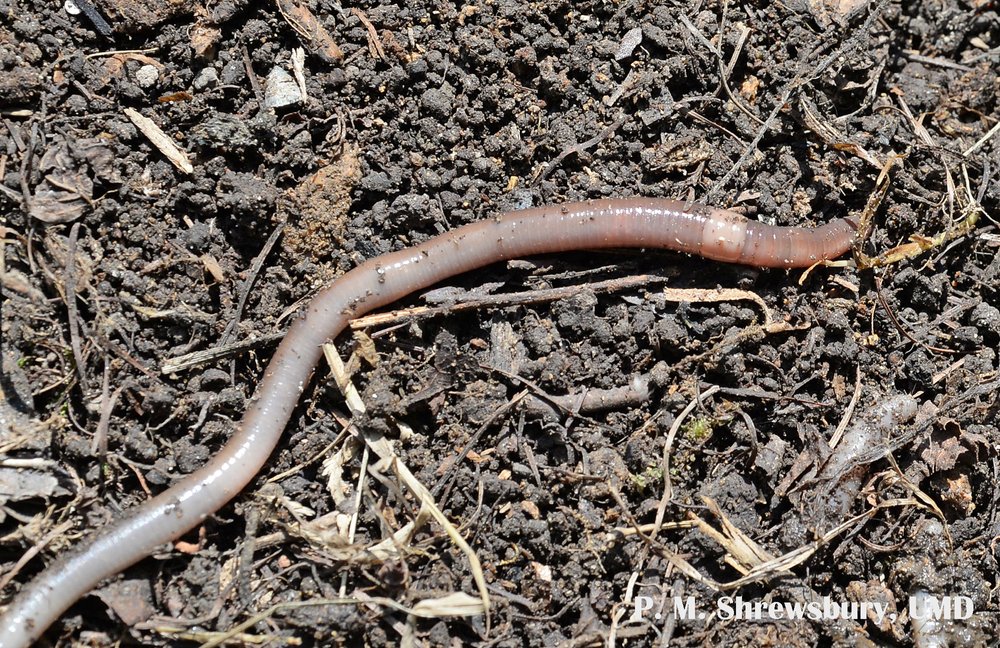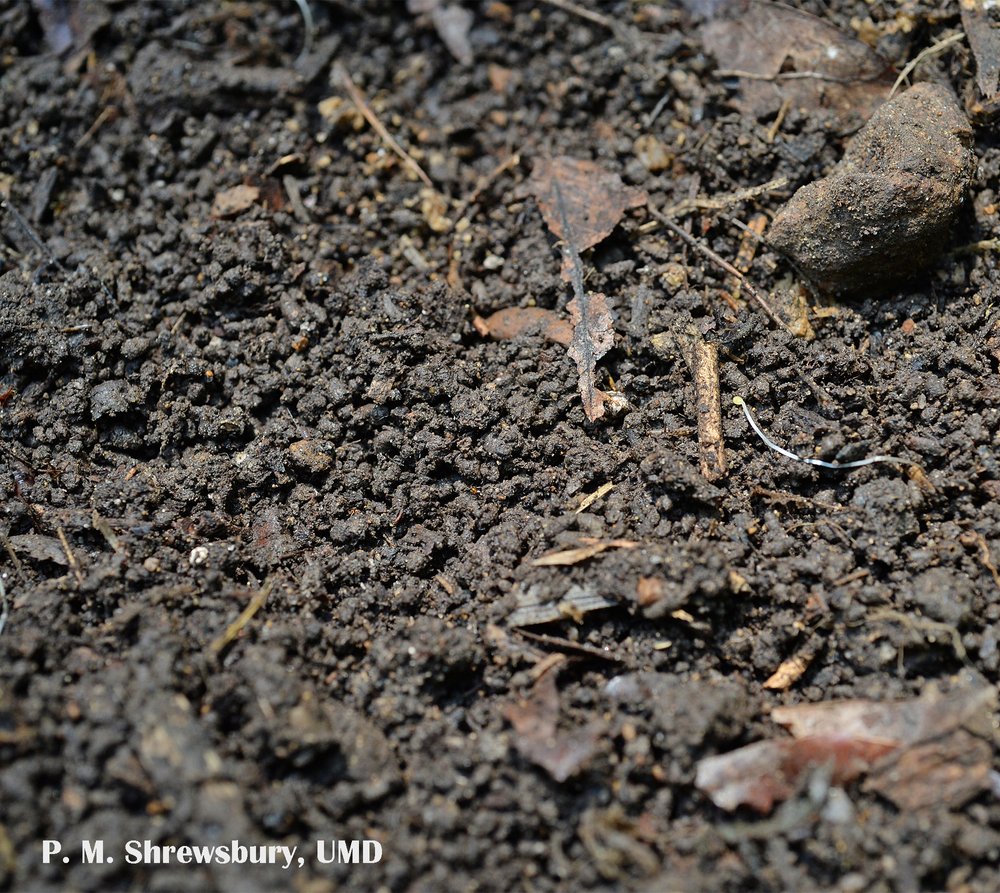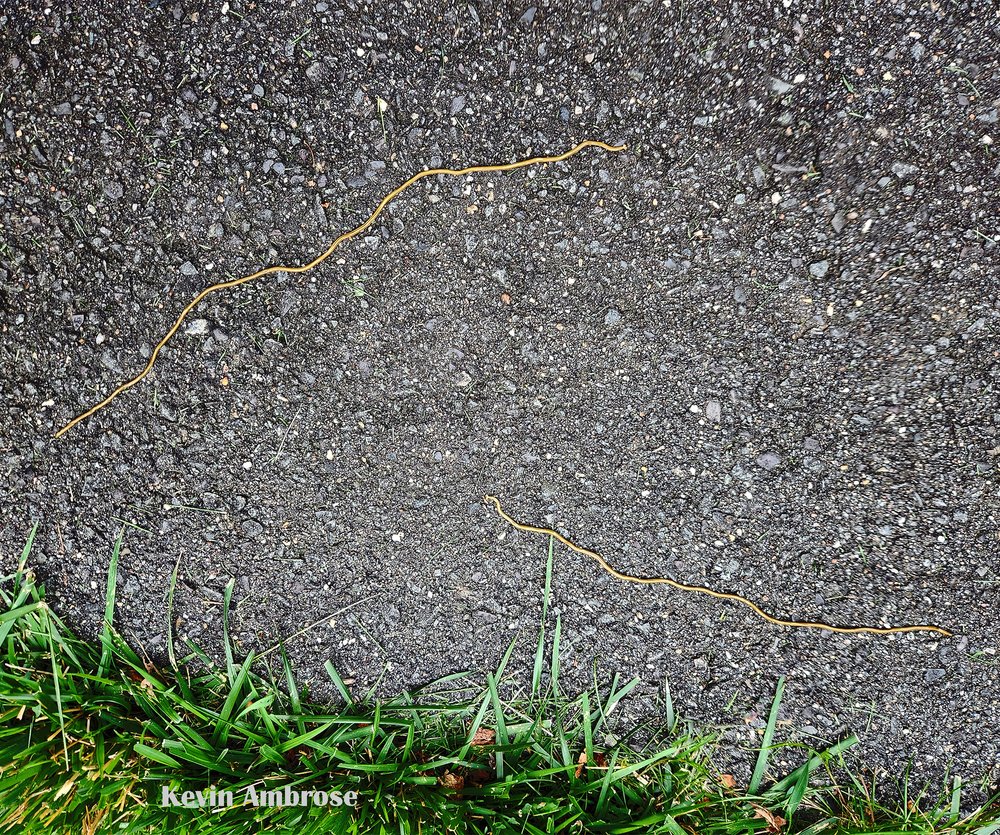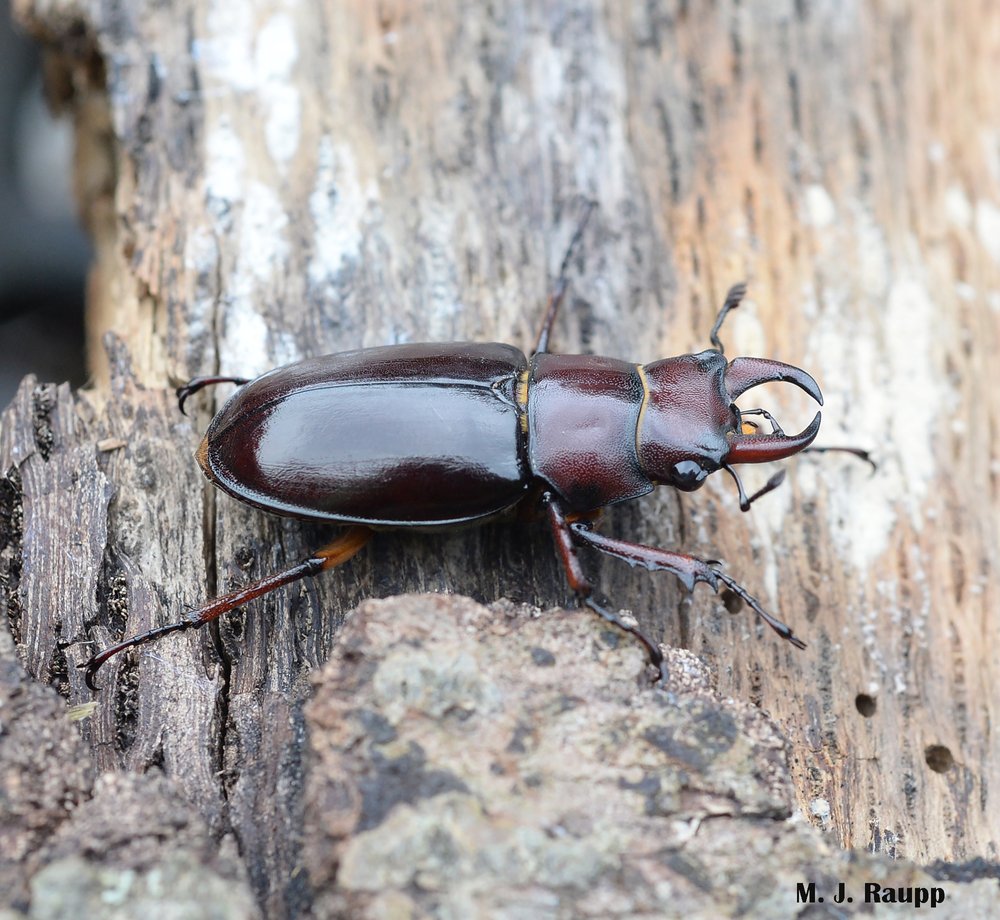
Vigorous snake-like movements and a saddle-like pale white band called the clitellum encircling the body are diagnostic clues to the identity of jumping worms. Credit: Paula M. Shrewsbury, PhD
Last week we met hammerhead worms as they slithered around a landscape preying on hapless earthworms and mildly terrorizing homeowners and their pets. This week we once again depart from our usual six-legged theme to meet another invader from Asia which is now a pariah in our gardens and natural landscapes. Despite not having legs, these snaky wigglers go by the name of jumping worms. Jumping worms are not close kin to hammerhead worms, which belong to the clan of repulsive creatures including liver flukes and tapeworms. Jumping worms are annelids, relatives of more familiar non-native earthworms like nightcrawlers, those large soil dwellers we gathered after a rainstorm to use for fish bait. One of the most common species of earthworm is the European nightcrawler, Lumbricus terrestris. Its deep vertical burrows help aerate soil, facilitating gas exchange for the roots of plants. Its burrowing behavior helps to reduce soil compaction and allows water to infiltrate soil, thereby giving plants critical raw material for photosynthesis. Waste products excreted by earthworms, called castings, are rich in nutrients vital to plants and act as a natural fertilizer, improving soil structure and fertility.
If worms in your garden behave more like snakes than slowly moving nightcrawlers, it’s a good bet that they are jumping worms. Wrangling them for fish bait can be challenging. Watch as one begins to drop its tail, a clever trick called autotomy which may help it escape from predators.
But not all worms create deep burrows in soil. Nor do they feed on soil and organic material underground, facilitating a slow steady release of nutrients to plants. Some worms make their living on the surface of the soil in what is called the epigeic zone. This is the realm of jumping worms, and several species have invaded North America dating back to the 1800s. One species of jumping worm, Amynthas agrestis, has been in Maryland since the 1930’s. Jumping worms also seem to be spreading throughout our nation. A report in 2021 enumerated 15 states with jumping worms. A peek at the current jumping worm map in iNaturalist indicates their presence in more than three dozen states. Jumping worms are highly active and slither with rapid snake-like movements when plucked from the soil. When harassed by humans and presumable predators, they will drop their tail segments in a feat called autotomy. The missing tail can be regenerated by the worm. This may give a would-be predator an appeasement snack while allowing the rest of the worm to escape and live another day.

Jumping worms produce coffee-ground-like excrement called worm castings. These appear on the surface of the soil and are another indicator of a jumping worm infestation. Paula M. Shrewsbury, PhD
What threat do jumping worms pose? Their ability to rapidly breakdown leaf litter at the soil surface and their lack of creating burrows in the soil dramatically alters the composition and subsurface nutrient content of soil. Soil infested with jumping worms tends to be drier with a consistency similar to coffee grounds. This radically changes the diversity and composition of micro and macro-organisms that live in the soil. As a result, well-established associations of microbes, plants, and animals in our forests and managed landscapes are disrupted. Scientists suggest that these perturbations disfavor our native flora and fauna and open the door for invasions of non-native species. Management of these invaders mirrors that of other soil borne invaders, including hammerhead worms. Jumping worms move in soil and soil amendments including mulch, so prevention is the key. When purchasing mulch be sure it has been processed, meaning that it has been heated to a temperature that will kill all life stages of jumping worms. Unprocessed mulch purchased in bags or bulk can be placed in the sun for several days in their bags or covered with plastic sheets if purchased in bulk. Several days of temperatures of 105 Fahrenheit or better will kill the worms and “cocoons” that harbor their eggs. Soil on tools, pails, or footwear may also transport eggs from one location to another, as will movement of plants from infested soils. When you find these snaky devils in your soil, bag them and destroy them by whatever means is your pleasure and dispose of them in the garbage. Don’t trade plants with others if your flower beds are infested. Anglers may also unwittingly move jumping worms if they purchased worms commercially for fishing. Purchasing something with a name like Alabama Jumper or Georgia Jumper is asking for trouble. Even if you buy good old nightcrawlers, when you are done fishing and left with a Styrofoam cup of dirt, please don’t leave it on the riverbank. It may contain eggs of jumping worms. Put it in a sealed plastic bag if you can and dispose of it in a garbage can.
To learn more about jumping worms, please click on this link: https://extension.umd.edu/resource/invasive-jumping-worms
Acknowledgements
We thank Deak and Sheri for sharing their jumping worms which served as the inspiration for this episode. Dr. Shrewsbury was the worm wrangler and provided lovely images of worms. Our thanks to her. “Invasive Jumping Worms That Violently Thrash If Handled Now in at Least 15 U.S. States” by Jason Murdock, “ Invasive Jumping Worms” by Christa Carignan, and “Jumping/Crazy/Snake Worms – Amynthas spp.” by Tawny Simisky and Dr. Olga Kostromytska where consulted to prepare this episode.





